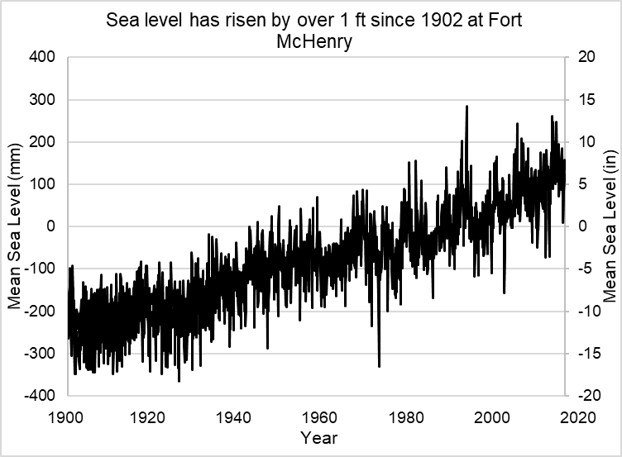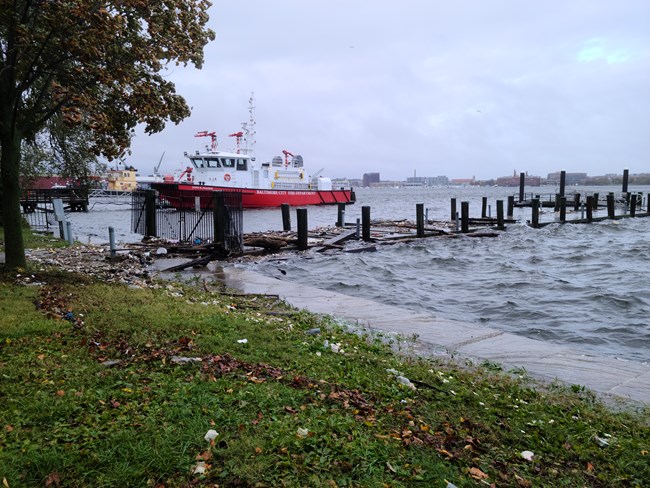
Baltimore, MD tide gauge (NOAA). Sea levels are risingSince the industrial revolution, we have burned fossil fuels such as coal, oil, and natural gas to power our societies. This process emits greenhouse gases like carbon dioxide and methane which trap heat in our atmosphere and cause global climate change.

NPS Sea Level Rise at Fort McHenryThe park's proximity to the tidal waters of the Patapsco River means it is threatened by rising sea levels and storm surges. Climate change is making storm events that flood the lawn and deposit debris and litter more frequent; threatening the daily use of the park grounds and trails to run, bike and picnic. Fort McHenry is historically significant as the birthplace of the U.S. national anthem,as a Union prison during the Civil War, as a hospital during World War I, and as a Coast Guard base during World War II. Protecting it from the threat of sea level rise is important for maintaining historic and cultural integrity What is Fort McHenry doing to help?The park has taken measures to reduce their consumption of fossil fuels and their impact on the environment. The Visitor Center:
The National Aquarium manages the nearby Fort McHenry wetlands, one of the only sections of natural shoreline left in Baltimore City. The marsh serves as a buffer, improving water quality and providing habitat in the harbor. Unfortunately, if marsh growth cannot outpace rising waters climate change may soon drown this ecosystem. 
NOAA The future of sea level riseThe more greenhouse gases are emitted the more sea levels are projected to rise. The future of sea level rise is dependent on emissions scenarios, higher emissions will cause sea levels to rise further. The most severe impacts of climate change can still be avoided by significantly reducing emissions.NOAA projects that the different tides of the tidal Patapsco River could drastically shift as well. By 2050, the intermediate low, and intermediate tides will rise on average by one to one and a half feet from where it is now. The intermediate high tide is project to raise by just over two feet as well. The projections span out to the year 2100 as well, showing even higher changes The intermediate low in this year is projected to be two feet higher than normal, a 100% increase from the projections for 50 years prior. That trend does not conclude there, where the intermediate and intermediate high projections raise to four feet and 6 and a half feet respectively. Aditional Resources
|
Last updated: June 26, 2024
